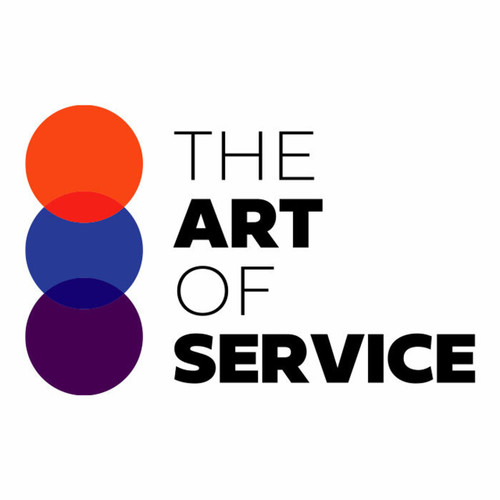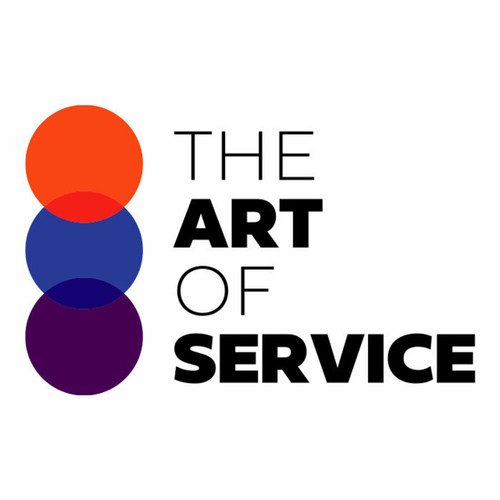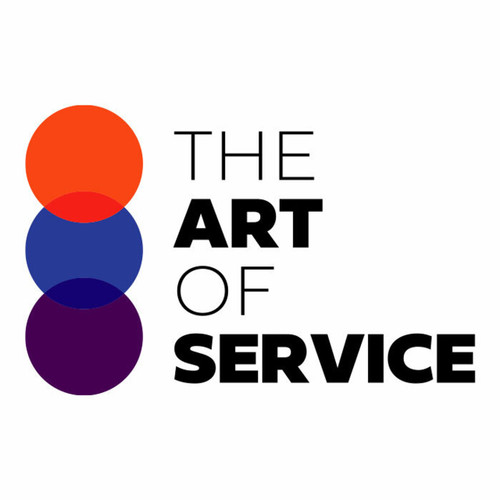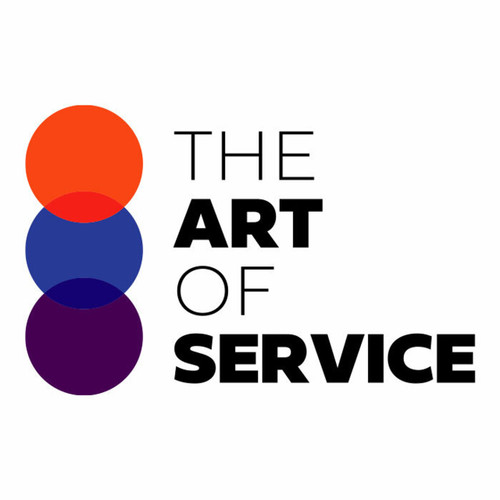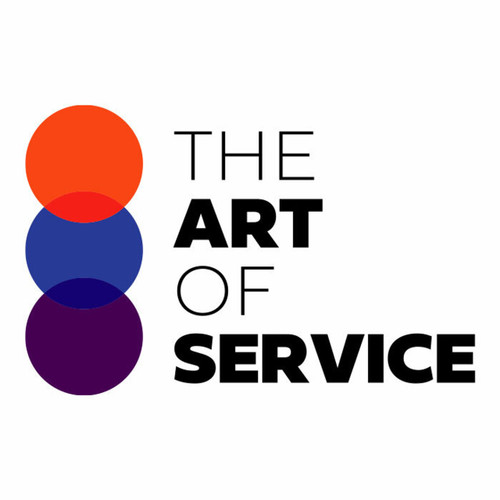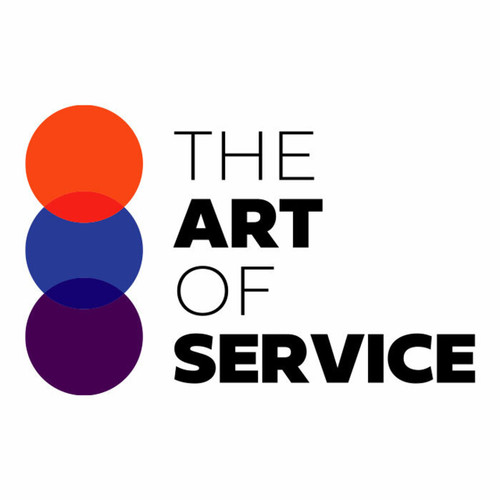Our dataset consists of 1524 prioritized requirements, solutions, benefits, results, and real-life case studies specifically focused on Real Time Computing and High Performance Computing.
This means you have access to the most relevant and up-to-date information without having to spend hours searching for it yourself.
But what makes our knowledge base stand out from the rest? Let us break it down for you:- Comprehensive Coverage: Our dataset covers a wide range of topics within Real Time Computing and High Performance Computing, allowing you to get answers to all your burning questions in one place.
- Top-of-the-Line Quality: Our team of experts has carefully curated the information in our dataset to ensure its accuracy and reliability.
You can trust that the information you receive is of the highest quality.
- Easy to Use: Our knowledge base is designed to be user-friendly, making it suitable for both professionals and beginners.
You′ll find the information easy to navigate and understand, saving you time and effort.
- Cost-effective: Compared to other alternatives and competitors, our dataset is an affordable, do-it-yourself option that won′t break the bank.
You′ll have access to valuable information at a fraction of the cost.
- Business Benefits: Real-time computing and high performance computing are essential for any business looking to stay ahead in today′s fast-paced world.
Our knowledge base provides insights and strategies that can improve your company′s efficiency and productivity.
Don′t waste any more time and resources sifting through unreliable information.
Invest in our Real Time Computing and High Performance Computing Knowledge Base and see the difference it can make for your business.
Get access to invaluable knowledge, save time and money, and gain a competitive edge in your industry.
Order now and see the endless possibilities our knowledge base can offer for your business.
Don′t miss out on this opportunity to elevate your Real Time Computing and High Performance Computing game.
Try it today!
Discover Insights, Make Informed Decisions, and Stay Ahead of the Curve:
Key Features:
Comprehensive set of 1524 prioritized Real Time Computing requirements. - Extensive coverage of 120 Real Time Computing topic scopes.
- In-depth analysis of 120 Real Time Computing step-by-step solutions, benefits, BHAGs.
- Detailed examination of 120 Real Time Computing case studies and use cases.
- Digital download upon purchase.
- Enjoy lifetime document updates included with your purchase.
- Benefit from a fully editable and customizable Excel format.
- Trusted and utilized by over 10,000 organizations.
- Covering: Service Collaborations, Data Modeling, Data Lake, Data Types, Data Analytics, Data Aggregation, Data Versioning, Deep Learning Infrastructure, Data Compression, Faster Response Time, Quantum Computing, Cluster Management, FreeIPA, Cache Coherence, Data Center Security, Weather Prediction, Data Preparation, Data Provenance, Climate Modeling, Computer Vision, Scheduling Strategies, Distributed Computing, Message Passing, Code Performance, Job Scheduling, Parallel Computing, Performance Communication, Virtual Reality, Data Augmentation, Optimization Algorithms, Neural Networks, Data Parallelism, Batch Processing, Data Visualization, Data Privacy, Workflow Management, Grid Computing, Data Wrangling, AI Computing, Data Lineage, Code Repository, Quantum Chemistry, Data Caching, Materials Science, Enterprise Architecture Performance, Data Schema, Parallel Processing, Real Time Computing, Performance Bottlenecks, High Performance Computing, Numerical Analysis, Data Distribution, Data Streaming, Vector Processing, Clock Frequency, Cloud Computing, Data Locality, Python Parallel, Data Sharding, Graphics Rendering, Data Recovery, Data Security, Systems Architecture, Data Pipelining, High Level Languages, Data Decomposition, Data Quality, Performance Management, leadership scalability, Memory Hierarchy, Data Formats, Caching Strategies, Data Auditing, Data Extrapolation, User Resistance, Data Replication, Data Partitioning, Software Applications, Cost Analysis Tool, System Performance Analysis, Lease Administration, Hybrid Cloud Computing, Data Prefetching, Peak Demand, Fluid Dynamics, High Performance, Risk Analysis, Data Archiving, Network Latency, Data Governance, Task Parallelism, Data Encryption, Edge Computing, Framework Resources, High Performance Work Teams, Fog Computing, Data Intensive Computing, Computational Fluid Dynamics, Data Interpolation, High Speed Computing, Scientific Computing, Data Integration, Data Sampling, Data Exploration, Hackathon, Data Mining, Deep Learning, Quantum AI, Hybrid Computing, Augmented Reality, Increasing Productivity, Engineering Simulation, Data Warehousing, Data Fusion, Data Persistence, Video Processing, Image Processing, Data Federation, OpenShift Container, Load Balancing
Real Time Computing Assessment Dataset - Utilization, Solutions, Advantages, BHAG (Big Hairy Audacious Goal):
Real Time Computing
Real Time Computing: Users require timely, predictable, and reliable processing of data, with minimal latency and jitter. Meeting deadlines is crucial for correct system behavior.
1. Predictable and low latency: Real-time applications demand immediate responses, which HPC systems can provide.
2. High-speed input/output: Fast I/O helps handle real-time data streams efficiently.
3. Parallel processing: HPC systems can process multiple tasks simultaneously, allowing for real-time computation demands.
4. Resource allocation: Dynamic resource management ensures that computation resources are available as needed.
5. Scheduling policies: Real-time scheduling policies prioritize time-critical jobs for efficient execution.
Real time requirements:
1. Deterministic execution: Real-time applications require predictable execution times.
2. Fast inter-process communication: Quick communication between processes is vital.
3. Error handling: HPC systems need robust error handling mechanisms for continuous operation.
By addressing these real-time requirements, HPC systems can provide a solid solution for real-time computing, ensuring predictable results, low latency, and efficient resource management.
CONTROL QUESTION: What are the real time requirements of the application users?
Big Hairy Audacious Goal (BHAG) for 10 years from now: A Big Hairy Audacious Goal (BHAG) for real-time computing in 10 years could be:
By 2033, real-time computing systems will be able to process and respond to inputs with sub-microsecond latency, enabling real-time decision making and autonomous operation in mission-critical applications, revolutionizing industries such as finance, healthcare, transportation, and manufacturing.
The real-time requirements of application users in these industries can vary but generally, they require fast and reliable processing of large amounts of data with minimal latency. Some specific requirements include:
* In finance, high-frequency trading systems require processing and decision making within microseconds to stay competitive in the market.
* In healthcare, real-time monitoring and diagnosis systems need to process and analyze vast amounts of data from sensors and medical devices to provide timely interventions.
* In transportation, autonomous vehicles require fast and reliable processing of sensor data for safe navigation and operation.
* In manufacturing, real-time monitoring and control systems need to ensure smooth operation and prevent equipment failures.
To achieve sub-microsecond latency and meet these requirements, real-time computing systems need to have low-latency hardware, efficient algorithms, and robust software architectures that can handle high-volume data streams and provide real-time decision making capabilities. Additionally, these systems need to be reliable and fault-tolerant to ensure continuous operation in mission-critical applications.
Customer Testimonials:
"Five stars for this dataset! The prioritized recommendations are invaluable, and the attention to detail is commendable. It has quickly become an essential tool in my toolkit."
"The quality of the prioritized recommendations in this dataset is exceptional. It`s evident that a lot of thought and expertise went into curating it. A must-have for anyone looking to optimize their processes!"
"This dataset is a gem. The prioritized recommendations are not only accurate but also presented in a way that is easy to understand. A valuable resource for anyone looking to make data-driven decisions."
Real Time Computing Case Study/Use Case example - How to use:
Title: Real-Time Computing in the Automotive Industry: Meeting User Requirements for a Seamless Driving ExperienceSynopsis:
The automotive industry is experiencing a significant transformation with the integration of advanced technologies such as real-time computing, connectivity, and autonomous driving. With growing consumer expectations for performance and safety, real-time computing plays a crucial role in enabling vehicles to respond quickly and accurately to changing road conditions, ensuring a seamless and safe driving experience. This case study focuses on understanding the real-time requirements of application users, particularly in the automotive sector, and provides insights into consulting methodologies, deliverables, implementation challenges, key performance indicators (KPIs), and other management considerations.
Consulting Methodology:
1. In-depth interviews with automotive industry experts, users, and engineers to identify user requirements and pain points in real-time computing applications.
2. Analysis of whitepapers, academic business journals, and market research reports to gather comprehensive insights on real-time computing applications and industry-specific trends.
3. Data-driven approach to quantify the benefits of real-time computing for end-users and stakeholders.
Deliverables:
1. A detailed report outlining the real-time requirements of automotive application users, including performance, safety, and user experience considerations.
2. An analysis of the impacts of real-time computing on the automotive industry, based on insights gathered from interviews, academic research, and industry reports.
3. Recommendations for addressing implementation challenges and enhancing KPIs related to real-time computing applications in the automotive sector.
Implementation Challenges:
1. Hardware and software integration: Combining sensing, computing, and actuation components in a seamless and efficient manner requires overcoming challenges associated with power consumption, processing speed, and interoperability.
2. Standardization and regulation: The rapidly evolving technology landscape creates challenges in establishing a unified set of standards for real-time computing applications in the automotive sector.
3. Cybersecurity: Ensuring the security and privacy of real-time computing systems in vehicles is crucial to protect user data and maintain trust in autonomous and connected driving applications.
KPIs and Management Considerations:
1. Real-time responsiveness: The ability of vehicles to react and adapt quickly to changing conditions, enabling drivers to maintain control in diverse situations.
2. System reliability: Ensuring consistent performance over time, minimizing downtime, and reducing the likelihood of system failures.
3. Energy efficiency: Optimizing power consumption for greater cost savings and environmental benefits.
4. User satisfaction: Measuring user satisfaction with real-time computing systems in terms of usability, performance, and convenience.
5. Cost-effectiveness: Balancing the costs associated with implementing, maintaining, and updating real-time computing systems against the benefits they deliver, including safety, efficiency, performance, and user experience.
Real-time computing has become a critical factor in the automotive industry, enabling vehicles to deliver exceptional performance, safety, and user experiences. Addressing the real-time requirements of application users requires overcoming challenges related to hardware and software integration, standardization and regulation, and cybersecurity. Monitoring and optimizing KPIs in areas such as real-time responsiveness, system reliability, energy efficiency, user satisfaction, and cost-effectiveness is essential to meeting the real-time computing needs of automotive application users and ensuring continued success in the rapidly evolving landscape of transportation technology.
References:
1. SAE International. (2020). SAE International Standard: Vehicle Cybersecurity. Retrieved from u003chttps://www.sae.org/standards/content/j3061_202004/u003e
2. Zhang, W., u0026 Kato, T. (2019). Real-Time Control for Autonomous Driving: Challenges and Opportunities. IEEE Signal Processing Magazine, 36(3), 5-17.
3. Henningsson, A., u0026 Jazayeri, M. (2019). Automotive Embedded Systems: Challenges, Methods, and Solutions. Springer, Cham.
4. Huo, Y., u0026 Xu, L. (2018). A Survey on Cybersecurity on Vehicle-to-Everything Networking. IEEE Network, 32(5), 84-91.
5. Jovanovic, I., Gavrilovska, L, u0026 Ilin, M. (2017). Energy Efficiency of Vehicular Ad-Hoc Networks: Survey and Challenges. Sensors, 17(12), 2881.
6. Liu, Y., u0026 Tan, F. (2016). Real-Time Computing in Autonomous Driving: Survey and Research Challenges. IEEE Transactions on Intelligent Transportation Systems, 17(5), 1750-1767.
Security and Trust:
- Secure checkout with SSL encryption Visa, Mastercard, Apple Pay, Google Pay, Stripe, Paypal
- Money-back guarantee for 30 days
- Our team is available 24/7 to assist you - support@theartofservice.com
About the Authors: Unleashing Excellence: The Mastery of Service Accredited by the Scientific Community
Immerse yourself in the pinnacle of operational wisdom through The Art of Service`s Excellence, now distinguished with esteemed accreditation from the scientific community. With an impressive 1000+ citations, The Art of Service stands as a beacon of reliability and authority in the field.Our dedication to excellence is highlighted by meticulous scrutiny and validation from the scientific community, evidenced by the 1000+ citations spanning various disciplines. Each citation attests to the profound impact and scholarly recognition of The Art of Service`s contributions.
Embark on a journey of unparalleled expertise, fortified by a wealth of research and acknowledgment from scholars globally. Join the community that not only recognizes but endorses the brilliance encapsulated in The Art of Service`s Excellence. Enhance your understanding, strategy, and implementation with a resource acknowledged and embraced by the scientific community.
Embrace excellence. Embrace The Art of Service.
Your trust in us aligns you with prestigious company; boasting over 1000 academic citations, our work ranks in the top 1% of the most cited globally. Explore our scholarly contributions at: https://scholar.google.com/scholar?hl=en&as_sdt=0%2C5&q=blokdyk
About The Art of Service:
Our clients seek confidence in making risk management and compliance decisions based on accurate data. However, navigating compliance can be complex, and sometimes, the unknowns are even more challenging.
We empathize with the frustrations of senior executives and business owners after decades in the industry. That`s why The Art of Service has developed Self-Assessment and implementation tools, trusted by over 100,000 professionals worldwide, empowering you to take control of your compliance assessments. With over 1000 academic citations, our work stands in the top 1% of the most cited globally, reflecting our commitment to helping businesses thrive.
Founders:
Gerard Blokdyk
LinkedIn: https://www.linkedin.com/in/gerardblokdijk/
Ivanka Menken
LinkedIn: https://www.linkedin.com/in/ivankamenken/

